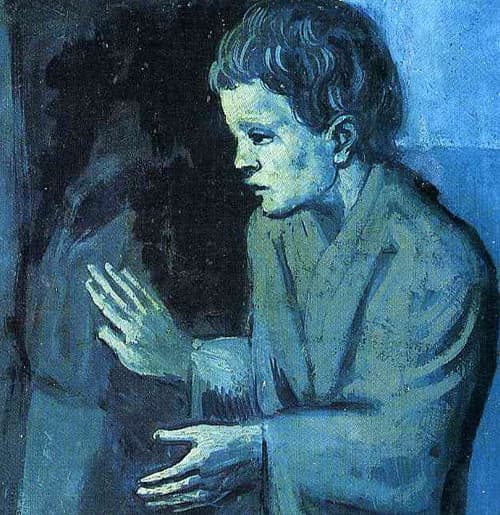Tara Parker-Pope,
For Better: How the Surprising Science of Happy Couples Can Help your Marriage Succeed
(Plum: 2010).
What is marriage, and how does it relate to human happiness? In order to work through marital difficulties - and to prevent them in the first place - spouses need to reflect on these basic questions. Tara Parker-Pope opens her acclaimed marital self-help book, For Better, with a different question: "Whatmakes a good marriage?" In other words, what are the mechanics of marriage? Having struggled through divorce herself, Parker-Pope, a health columnist for the New York Times, turned to social science to see what went wrong. As the fruit of her extensive research into social statistics, surveys, and controlled experiments, the book aims to reveal the patterns of behavior that lead to divorce and offer suggestions for overturning these patterns.
Some of the most eye-opening research is presented in Chapter Six, titled "Diagnosing the Health of a Relationship," which seeks to uncover concrete predictors of divorce like facial expressions and ways of speaking. She tell us, for instance, that one group of lab researchers was able accurately to predict future marital unhappiness by analyzing couples' facial expressions during recorded conversations. Eye rolling, it turns out, is one of the best indicators of marital turmoil because it is an obvious sign of contempt. In another study, couples were asked to tell the story of how they met; couples who used the communal pronouns "we," "us," and "our" were less likely to get divorced than couples who told the tale as an individualistic "I." At first glance, such studies appear to be helpful, and to an extent they can be: frequent eye-rolling certainly can be a sign of contempt which must be remedied. Dwelling on them, however, can encourage a sense of doom: I roll my eyes at my wife, so we must be headed for divorce. Parker-Pope's focus on predicting divorce by looking at the mechanics of marriage may actually fuel anxiety over where one's marriage is headed.
Similarly, her use of statistics to highlight "divorce risk" implies the inevitability of divorce in some cases. Looking at divorce rates in the opening chapter, she notes an especially high divorce rate among college dropouts who married in the 1980s before turning twenty-five. She thus concludes that "your divorce risk is strongly affected by the age at which you marry, your educational attainment, and the decade in which you married" (p. 14). This problematic sense of "divorce risk" falsely attributes a kind of causal power to the statistics. Any young married couple, genuinely in love and committed for life, need not fret about statistical risk. Based on the statistics, Parker-Pope would have us wait until we turn twenty-five to marry to improve our "odds" of staying married. But for a particular couple who make their marriage vows in earnest, divorce is simply not an option, and rightly so. Ironically, Parker-Pope goes on to cite research which states that merely pondering the thought of divorce is a strong predictor for divorce (p. 260), while her own use of the statistics forces the reader to do just that!
Obviously these statistics are not false or irrelevant, but they need to be understood in light of what marriage is. At no point does Parker-Pope explicitly raise this basic question, although she does recognize a cultural shift in how we view marriage. Unlike traditional marriage, marriage today is more a matter of forming a "friendship" or finding a "soul mate" than rearing children (p. 168). Although she notes that this sense of marriage may be "unrealistic," she presupposes all along that marriage is primarily for the happiness of the couple. Despite her intent to help others avoid divorce, she still considers divorce to be a necessary option for unhappy couples. In her chapter on sex within marriage, she writes, "Couples also need to consider the possibility that the lack of sex in marriage may be a signal that all intimacy in the relationship is over" (p. 88). She admits that divorce may be a better option than an "unfulfilling," sex-less marriage. But she never considers the possibility that a false, self-interested view of marriage and human happiness is responsible for our country's divorce problem in the first place. Citing countless surveys on marital "satisfaction" and "happiness," she never explores what happiness truly is.
In ignoring these basic questions, Parker-Pope fails to penetrate to the root causes of divorce. If she understood that human sexuality finds its meaning in the irrevocable commitment of marriage, she might have reflected more deeply on the fact that "infidelity rates are highest among couples who cohabit before marriage" (p. 38), rather than merely mentioning this fact in passing. If she understood that marital love is the fruitful giving and receiving of husband and wife, which finds its fulfillment in fatherhood and motherhood, she would not promote "gender equality" in marriage by highlighting the lack of conflict among gay and lesbian couples. Instead she might reflect more deeply on the study which shows that those marriages "marked by the male breadwinner/ female homemaker roles...had the lowest divorce rate..." (p. 254). Parker-Pope's analysis of the "mechanics of marriage" in For Better is always colored by her mistaken view of marriage as a mere choice - as something constructed for one's own contentment. In promoting this view of marriage and legitimizing the option of divorce, she does more harm than good. A genuine marital self-help book - if such a thing exists - must begin with a proper understanding of marriage.
John Laracy is an assistant professor of Religion at Seton Hall University and received his PhD from the John Paul II Institute in 2018 for his dissertation “Divine Love as Event: A Study in the Trinitarian Theology of Hans Urs von Balthasar.”



